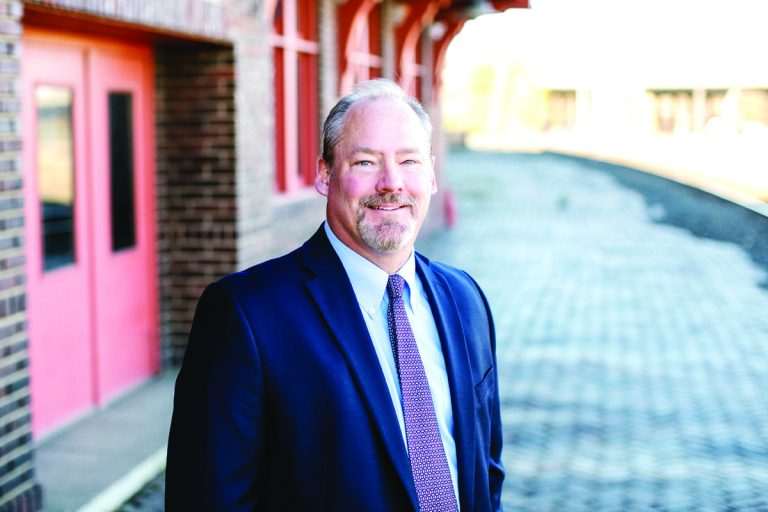Peter Hankla is no stranger to Task Force 21. “I’ve been part of Task Force 21 since 1999” shares Peter in a recent interview. Peter is quick to point out that Task Force 21 is not one person, but rather a group of dedicated professionals “sharing their time and talents by being part of this very important group.”
Peter was the Vice-Chairman of Task Force 21 under Peter Zimmerman, who ended up moving to Fargo, and under now retiring chairman Mark Jantzer. As of right now, there has not been a Vice-Chairman appointed to replace Hankla “we’re trying to figure that out right now” according to Hankla “we’ll be looking for the best fit for the position. That will probably be a group decision that will come in the coming months.”
There are 11 current members of Task Force 21, and soon there will be a total of 12, which seems to be a good sized working group for the tasks they have before them. “We are looking for younger people, and planning for a little longevity as we have Sentinel ahead of us and that’s a 10-12 year process” continues Hankla “we’re trying to get a pipeline of people that are willing to serve.” Mixed in with that formula is the understanding that longevity, when it comes to dealing with the government contracts and requests, is important “it’s important to have knowledge and some history. We need to have relationships in place. It’s certainly beneficial and definitely helpful that when you go to speak to someone on issues that you have known them for 10 years. You have your credibility and commitment established and you have working knowledge of what’s going on. That’s incredibly important and that’s why we need to start the younger people who will take the time to learn. We have a good group (Task Force 21) who are willing to do that” says Hankla.
Peter Hankla pointed to current Task Force 21 members like Jason Zimmerman and Cassidy Hjelmstad as being important to the continuation of influence that TF 21 has and will continue to have. “We certainly have good people in place. Brekka Kramer (CEO of the Minot Chamber EDC) is now a permanent position, and she does a great job…she’s extremely knowledgeable”
Another point that Hankla made was that TF 21, and Minot, continue to have community leaders appointed to key positions “and we have a good reputation for the job that we do. Every base has a group similar to TF 21. I’m not saying we’re the best of the best, but we (TF 21) stand out as one of the most notable and the most effective of these groups. We hear these comments about TF 21 over and over again. Our group will be in the right place, having the right conversations and we’re all going to be engaged. If we learn something we aren’t going to just sit on it.” And as for TF 21 Hankla says “I am stepping into a position that has been run well.”
Being part of Task Force 21, according to Hankla, not only takes dedication and commitment on the part of the members of the committee, but a dedication and commitment on the part of the businesses they are associated with “whether they are working for someone else, or they own the business or have partners. It’s community involvement not only on a personal level, but also on a business level. Businesses are supporting this process (the work of TF 21) as well.
But on the flip side, businesses in Minot and the surrounding area benefit from the work of TF 21 in keeping the Minot AFB vibrant “$644 million comes to Minot on an annual basis. That definitely impacts my business and everybody else’ business” adds Hankla.
With so much on the horizon, including Sentinel, is there a need to increase the size of TF 21? “Under TF 21 we have formed a Sentinel working group of 4 people. Mark Jantzer, Brekka Kramer, Cassidy Hjelmstad and Jason Zimmerman. Their initial directive is to do the initial meetings and assess and figure out what the emerging needs are for our community, identify workforce issues, construction issues, expansion and development and other things we might need to consider and bring those back and we are planning on forming committees which will involve city, county, townships…key people in these areas that will work the issues that are identified. We felt it really wasn’t effective to appoint some massive committee now, when after Nunn-McCurdy the project has been sent back for re-planning and re-formulating, new timelines; and we really don’t know what they are yet. We know generally what we need to do, but we aren’t totally going to understand Sentinel until we collaborate with the other communities who will document issues they are running into, and the needs and shortfalls that they are identifying. We hopefully are going to have the ability to assess that and position Minot and North Dakota to handle these things.”
Ahead of Peter Hankla and Task Force 21 are several large modernization projects, of which the largest is the modernization of the entire ICBM forces at 3 bases. “When you look at Sentinel, it is the largest Department of Defense project in history, and it’s going to take a decade to complete, depending on several factors. We still don’t know the timeline. The fact is that there has never been a fully completed as initially planned Department of Defense project. We need someone engaged in the process to do what we can to ensure that we get Sentinel fully completed, as initially planned. So, we get Sentinel, and we retain our Minuteman III missiles right up to the time they are decommissioned and changed out” according to Hankla.
Peter Hankla and Task Force 21 also see their mission as one of education. “Part of the purpose of our group is to interface community, legislators and Air Force. In that we should educate, share information so that we can make a positive impact for the Air Force, Minot Air Force Base and our community. I think we are doing a pretty good job (of that mission) it certainly is in the sphere of what we are supposed to be doing” according to Hankla.
For Peter Hankla his role of Chairman of Task Force 21 lets him meet and interact with top leaders at Minot Air Force Base, and across the Air Force in general. “We get to meet so many leaders” says Hankla “but in all seriousness, I haven’t met a bad leader. They all have different leadership styles, but it’s a great experience.”
The next 5-10 years will be ultra important for Task Force 21, and for the nation as the global military theater is ever changing. The heritage and DNA of Task Force 21 is to always be on the cutting edge of change; to look over the horizon and maybe to anticipate what will happen next. And probably most important, to be prepared to change or alter their course and lean in on multiple conversations as the voice of Minot and Minot Air Force Base. Without a doubt, we are and will continue to be in good hands.












